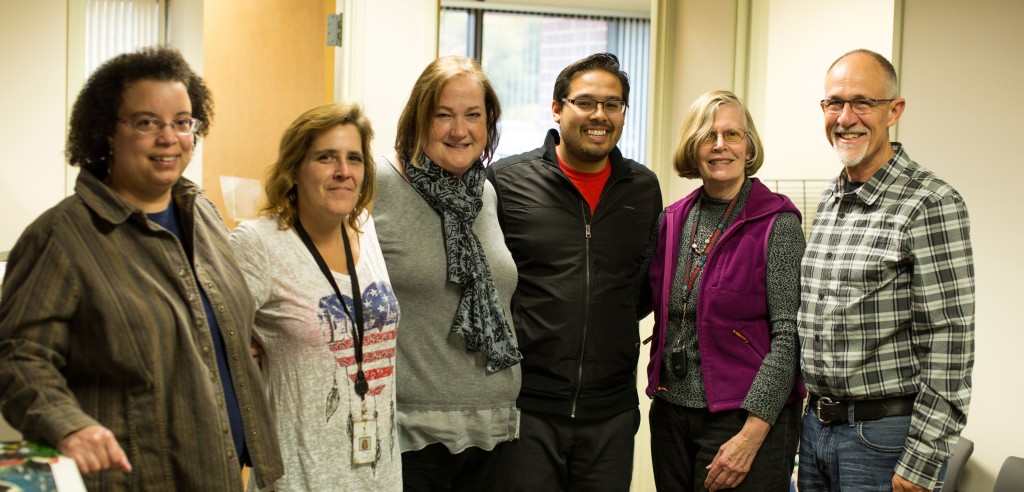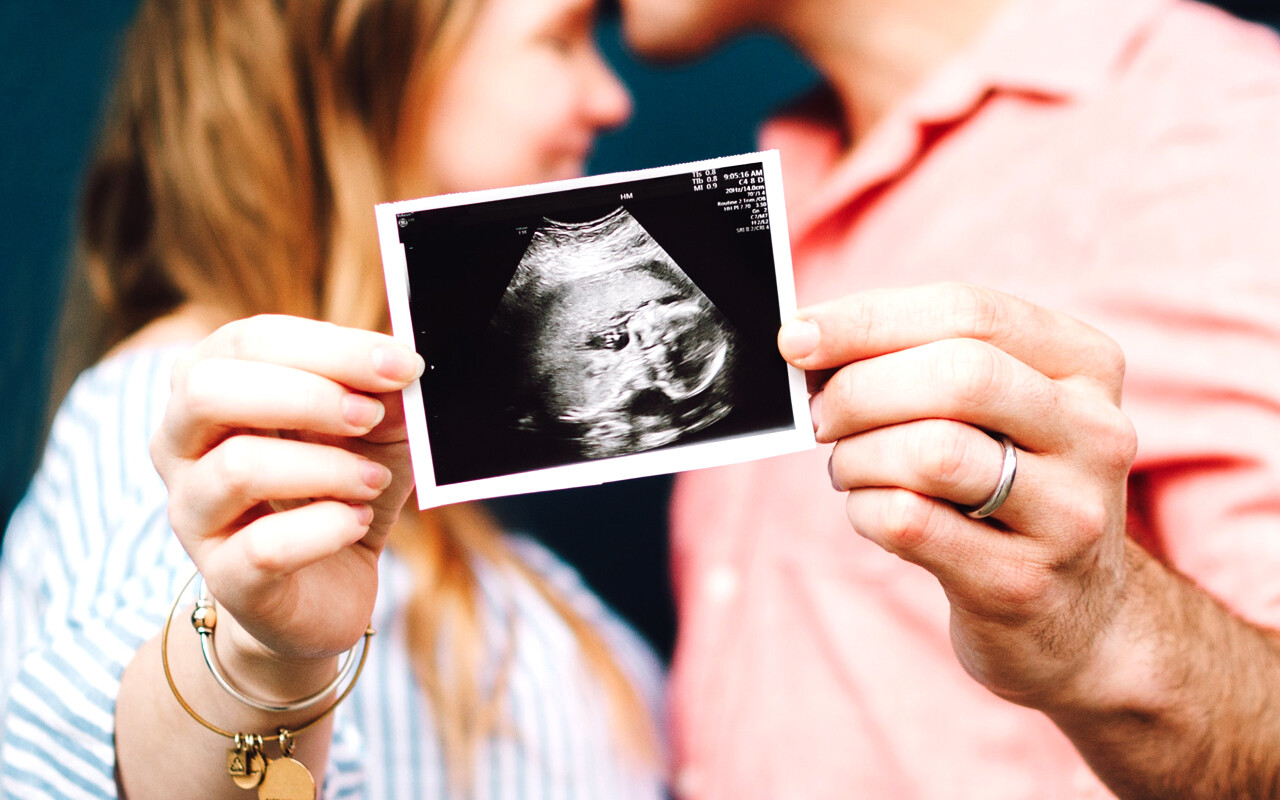
Steve Whicker (right), the campus pastor of Eagle Brook's Spring Lake Park campus, sat down with Clare Brumback (center), the president of CEAP, to discuss CEAP's new relationship-based approach to food assistance programs. The Community Emergency Assistance Program (CEAP) exists to empower individuals and families by providing basic needs and personalized support to help them achieve stability and independence. It was founded in 1970 as a food shelf, and now, along with food support, provides resource referrals for families in need.
CEAP has been in partnership with Eagle Brook for over seven years. Recently, Eagle Brook invited CEAP to address the growing dilemma of food insecurity in Anoka County, and together we built relationships with four other Anoka County food shelves.Over the last 18 months, these agencies have all collaborated to work together to care for 89 homebound seniors by bringing food packages to them through volunteer drivers to bring hope, relationships and basic needs to the vulnerable elderly in our communities.
Clare Brumback, has been the president of CEAP for the past two years, and on-staff with the organization for four. She is passionate about not only caring for the physical needs of the vulnerable and hurting in the Twin Cities, but about speaking to their spiritual and relational needs, as well.
What is CEAP's primary mission?
Our mission is to connect families and individuals in our community to essential services to help them not only survive, but to thrive. So, we are a safety net, and our charge and our goal is to continue to weave that safety net ever tighter to catch people before they fall. And that safety net can only be woven together with everyone in the community, whether it is corporations, businesses, faith communities, social service agencies, government supports. If we all work together and we weave that tightly, we will bring people to a state of thriving versus surviving. Traditional food shelves work off a paradigm of pounds and individuals. How many people do we serve with how many pounds? And now we have turned around, with the partnership of Eagle Brook, toward "How do we create relationships that support people in their walk towards happier, healthier lives?"
What is the need that you are seeing in the community?
Coming off of this last recession, people who are lacking in employment, education, and resources often find themselves the last to recover as the rest of us are bouncing back into more job opportunities. Those who might have had fewer resources are finding it more difficult to bounce back. So, the needs that we see are continued focus on education, employment, and then having a very tightly woven, but resource-rich, safety net.
We're going to figure out how to do this because what we see every day are people who are in crisis, who are in need, who are not just poor in resources, but poor in Spirit. It isn't the food that does it. It's that moment of connection, that moment of, "I care about you and there's a greater purpose in life." People need that reminder of who's really loving them, who's really caring for them.
So, it's not, "Here's your 15 pounds of food per person and here's your groceries for the month and we will see you next month." It's establishing strong relationships. And not just between CEAP and the family or individual, but between CEAP and, hypothetically, Eagle Brook and a family and individual. It's offering wrap-around services, making connections, and building relationships. So relationship-rich and resource-rich, equally, is what we need to be able to sustain folks. I often say, "I can essentially help to feed you, house you, clothe you, but I cannot attend to your spiritual needs." How can we pull those together? Because those are all a part of the safety net.
What do you think churches like ours can do to help people get connected with people as opposed to people connected with an organization?
Well, I think a great example of our attempts to make this successful relationship building would be Anoka Connect and Deliver (CAN). So, a year ago, the five food shelves came together as a collaborative saying, "You know, this journey is going to be easier with friends. How do we work better together?" And at the beginning we had an opportunity to fund a mobile food program, through legislative money we received. Most food shelves went out and bought a truck so they could drive into a parking lot and distribute food. We chose to say, "You know what, we're going to deliver food from the food shelves to people who are home-bound, and who have limited to no access, and we are going to engage our church partners to be the delivery people." Because as important as the food is the nourishment of a relationship. So, we're not only bringing the food, but bringing that other nourishment of a healthy relationship to your doorstep.
Today we have 89 seniors and home-bound folks who are very isolated, now being served. And now our encouragement and challenge to Eagle Brook attenders is to consider taking on one of those routes, and taking the church outside to some of these folks who are so isolated. It makes those connections that are so important. There are many ways to do a meal service, right? We put our stake in the ground with delivery—it's more challenging, it's difficult, it's hard to coordinate. There are a lot of reasons that it would be easier to do something else. Prior to this, the people we serve just hired a service to have delivery drivers take the food box and drop it on the doorstep. And we really are striving, very slowly, to make sure we are leading first with the relationship component versus the food component.
We have one delivery person who sets aside an hour and does their route so that they can stay with this last person at the end of their route for a long time, because they have built such a strong relationship that it is almost familial. And that is such an incredibly treasured and important piece of that person's life.
What are all of the different volunteer roles that other people can step into, other than driving?
Besides delivery drivers, we have shopper helpers. So that's assisting people as they are shopping for their food at the food shelf, since we are a full-choice model. And if people are task-oriented and that's how they care to serve, there are sorters, stockers, people who pack the boxes before they go out. Some people are more comfortable with that, and that's a fantastic way to serve. We need all kinds of hands on deck to keep the wheels going.
We try and keep most of our financial resources toward buying things that aren't often donated that people need, so the more volunteers we have, then the more resources we can put toward essentials, and Emergency Funds, to keep people from eviction and helping people with base resources.
How this new relationship-based approach is working better than the old approach?
It has been a profound experience. One person can't change the old food shelf paradigm. And to have the partnership of Eagle Brook to walk us through that as a group has been a huge transformation in how we approach our work. It has enabled us to stop thinking about pounds and dollars and to start thinking about people. It has helped us to change our outlook from an attitude of scarcity "Not enough, what do we need, how are we going to get the money, what do we need next?" to an attitude of abundance, because we have a lot to offer in the relationships we can put forward. And that has been a pretty significant and profound transformation in how we all work.
On the recipient side, it creates a sense of dignity and equality. We are all God's children. And when you start leading with relationships, versus the "have's" and the "have-not's" attitude, it has dramatically changed how we walk forward in our work.
To get connected with CEAP and sign up to volunteer, click here.


